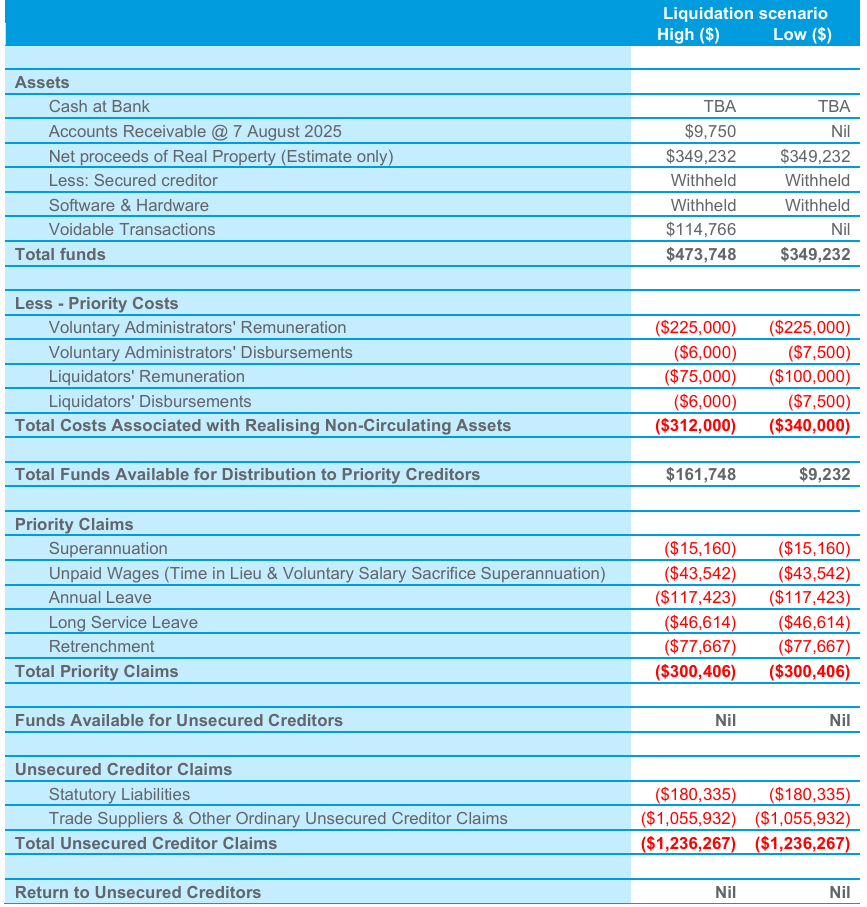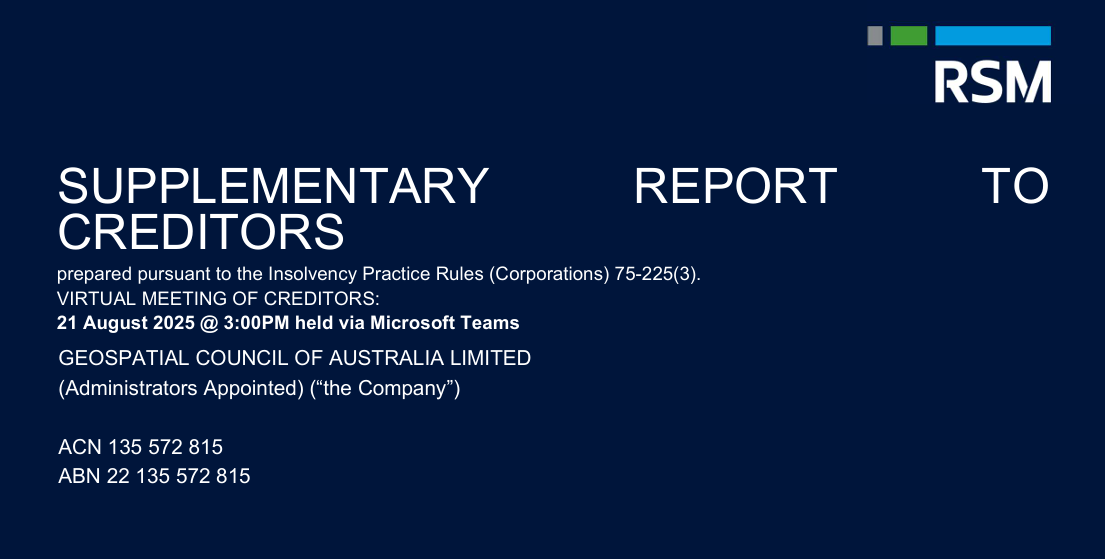How we got here?
The Geospatial Council of Australia (GCA) entered voluntary administration on 26 May 2025 under Part 5.3A of the Corporations Act 2001 (Cth). Administrators were appointed to take control of the Company, investigate its affairs, and report to creditors on available options: (1) to execute a Deed of Company Arrangement (DoCA), (2) to return the company to the directors, or (3) to place the company into liquidation.
In August 2025, the Administrators circulated their final report to creditors. The report noted that the Institution of Surveyors NSW (ISNSW) had offered a DoCA which included a $400,000 contribution. The proposal would have allowed continuity of some services (including certification), transitioned memberships, and provided a return to unsecured creditors of approximately 13–16 cents in the dollar.
However, the DoCA did not proceed. Under s 446A of the Corporations Act, if a DoCA is not executed within the required timeframe, the default position is that the company must enter liquidation. As a result, GCA is now in liquidation.
Consequences identified by the Administrators
The Administrators’ report emphasised that liquidation carries significant implications:
- For Members
- “Over 2,400 members will lose all benefits previously provided by the Company and will need to arrange alternate memberships with other providers.”
- Certification, CPD, and professional development programs cease immediately.
- For Employees
- All staff positions are terminated.
- Employee entitlements crystallise at liquidation. Under s 556 of the Act, employee entitlements have statutory priority.
- Some payments may be available under the Fair Entitlements Guarantee (FEG), though superannuation is excluded.
- For Projects and Services
- Certification programs, events such as the Locate conference and awards, and other national services will no longer operate.
- Representation of the profession at a national level “will cease,” leaving a gap that other associations may need to absorb.
- For Creditors
- In liquidation, unsecured creditors are unlikely to receive any return.
- This contrasts with the estimated 13–16 cents in the dollar that may have been payable under the proposed DoCA.
- Employee creditors may recover through the statutory priority and FEG, but trade and industry creditors face significant loss.
- For the Profession
- The Administrators observed that liquidation “will disrupt the benefits previously received by members and leave a gap in the industry.”
- No national peak body remains to coordinate advocacy, international representation, or standards development.

Legal framework
Under s 533 of the Corporations Act, liquidators must investigate and report to ASIC on potential misconduct, insolvent trading, or voidable transactions. This means that questions about wrongdoing are formally handled through the statutory liquidation process, not by members. The Administrator’s report noted that while potential claims may exist, there are no guarantees of recovery for creditors.
Reflection
The failure of the DoCA and the entry into liquidation mark the end of GCA’s formal operations. The Administrator’s report makes clear that:
- Members lose services and benefits.
- Employees lose jobs, with only partial protection via FEG.
- Creditors face heavy losses.
- The profession loses a unified national body.
These are sobering consequences. But they also create an opportunity for us, as colleagues, to reflect on what kind of national representation is needed and what can be rebuilt.
Open Questions for Members
- How has the liquidation affected you — as a member, employee, or stakeholder?
- Which services or programs do you most regret losing (e.g. certification, CPD, awards, conferences)?
- How should the gap in national representation be filled? By existing associations, or by something new?
- What lessons do you think the profession should learn from the failure of the DoCA?
- How do we ensure that trust, accountability, and sustainability are at the heart of any future body?
Please leave us your ideas or comments here
All posts and comments are reviewed before publication. Your name and contact details are optional.

